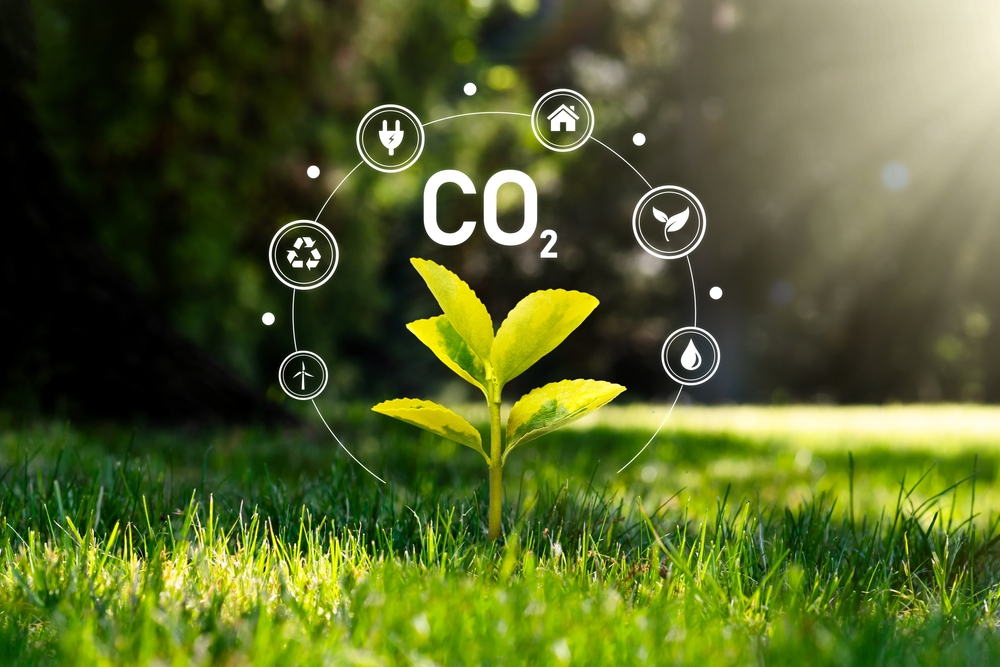Pioneering the Path to Sustainable Carbon Storage: Climeworks’ Innovations Unveiled

In the relentless pursuit of scaling up carbon storage to counteract the escalating global carbon dioxide levels, Climeworks has emerged as a trailblazer with its state-of-the-art facilities in Iceland and Scotland. The Orca plant in Iceland and the collaborative venture with Storegga Geotechnologies in Scotland signify a groundbreaking leap toward realizing ambitious carbon removal projects and accelerating large-scale carbon extraction and storage on a global scale.
Delving into Carbon Storage and Its Indispensability
The imperative to actively capture and store atmospheric carbon dioxide, known as carbon removal and sequestration, has taken center stage in the battle against climate change. Distinguished methods in this domain include direct air capture, reforestation, bioenergy with carbon capture, and mineralization. While the reduction of emissions is crucial, the simultaneous need to scale up carbon storage has become imperative to meet climate goals and offset residual outputs. According to the Intergovernmental Panel on Climate Change (IPCC), the removal of gigatons of CO2 throughout this century is indispensable to avert catastrophic warming. Therefore, the swift development and deployment of carbon removal technology have become an urgent priority.
Climeworks’ recent venture involves the construction of the Orca direct air capture and storage plant in Iceland, a project that stands as a testament to innovation in the face of climate challenges. Powered by geothermal energy, Orca comprises eight carbon collection units capable of capturing a staggering 4000 tons of CO2 daily at full capacity. The plant’s modular design not only facilitates operational flexibility but also positions Climeworks to scale up carbon storage by seamlessly incorporating additional collection units over time. Each collection module deploys large fans to draw ambient air into contact with advanced filter material that selectively binds CO2 molecules, concentrating them for subsequent extraction and storage.
In a strategic partnership with Carbfix, Orca leverages Iceland’s unique geology to mineralize and permanently store the captured carbon dioxide. The process involves dissolving concentrated CO2 from the collectors in water and injecting it deep underground into the basalt bedrock, forming a solid rock structure. Remarkably, over 95% of the injected CO2 undergoes rapid mineralization into inert rock carbonates within two years, ensuring secure underground storage for many centuries.
With an anticipated annual capture capacity of 1 million tons of CO2, Orca’s impact is staggering, equivalent to the emissions from approximately 790,000 cars. This unprecedented scale not only underscores the viability of direct air capture but also demonstrates its potential to meaningfully mitigate emissions at gigaton levels. The Orca project thus cements Iceland’s position as a leader in carbon removal innovation and provides a pioneering model for large-scale carbon dioxide extraction and permanent sequestration on a global scale.
Scotland’s Visionary Carbon Removal Project: A Partnership for Progress
Simultaneously, Storegga Geotechnologies, based in the United Kingdom, has joined forces with Climeworks to develop innovative carbon removal projects in Scotland. This collaborative mission focuses on capturing pure CO2 emissions from industrial sources along the eastern Scottish coast, steering away from direct extraction from ambient air. The methodology involves strategically installing Climeworks’ CO2 collectors at large stationary emitters, such as a fertilizer plant, rather than deploying specialized direct air capture units.
In the current year, Storegga and Climeworks aim to initiate the extraction of 300,000 tons of CO2 annually from a fertilizer plant’s flue gas emissions using multiple collectors. Looking ahead to 2030, the project envisions scaling up carbon storage to an impressive 2 million tons extracted yearly. This expansion will be achieved by strategically adding collectors at more industrial facilities along the Scottish coast. The captured carbon will then embark on a journey, being transported 60km offshore through an undersea pipeline for injection into porous saline aquifer reservoirs located more than 1km underwater beneath the North Sea.

Ensuring meticulous monitoring and transparency will be paramount to verifying the permanent offshore storage of carbon in the aquifers. Beyond the environmental benefits of carbon storage, this facility promises to generate employment opportunities and contribute significantly to Scotland’s ambitious goal of achieving carbon neutrality by 2045.
A noteworthy distinction from the Orca project lies in the reliance on capturing point-source emissions rather than direct air capture. Furthermore, the focus shifts to offshore saline aquifer storage instead of mineralization. However, both projects underscore the remarkable capacity to scale up carbon storage using diverse and innovative methods.
Diverse Approaches for Carbon Storage on the Horizon
Beyond the realms of direct air capture and offshore storage, an array of technologies is currently under development to further scale up carbon storage. These include bioenergy with carbon capture, enhanced root crops, mineralization into construction materials, and agroforestry. The integration and synergy of these methods hold the potential to significantly accelerate the removal of legacy carbon at an unprecedented scale.
The Road Ahead: Navigating the Decade of Carbon Innovation
Looking ahead, the continued innovation and deployment of carbon removal technology remain pivotal not just for this decade but for the foreseeable future. Projects like Orca and Scotland’s offshore storage serve as beacons, illuminating the path toward scaling up carbon storage and laying the groundwork for achieving negative emissions. Urgent action is imperative, necessitating supportive policies that encourage research, commercialization, and widespread adoption of these transformative technologies. With workable technology at our disposal, the urgency to cleanse the atmosphere and restore a safe climate leaves no room for delay in our collective pursuit of a sustainable and resilient future.
Charting a Sustainable Future: The Culmination of Carbon Storage Innovations
In the wake of Climeworks’ groundbreaking initiatives in Iceland and Scotland, the trajectory toward a sustainable future is undeniably clearer. The Orca plant’s ingenuity, powered by geothermal energy and leveraging Iceland’s unique geology for mineralization, underscores the viability of direct air capture at an unprecedented scale. Simultaneously, the collaborative efforts in Scotland, focusing on capturing point-source emissions and utilizing offshore saline aquifer storage, showcase the versatility of approaches in scaling up carbon storage. As diverse methods, including bioenergy with carbon capture and agroforestry, continue to evolve, the roadmap to a carbon-neutral future becomes increasingly intricate and promising. The imperative now lies in the swift implementation of supportive policies that champion research, commercialization, and widespread adoption. With the technology at our fingertips, we stand at the precipice of a transformative era, where the concerted efforts of today pave the way for a resilient and sustainable tomorrow. The clock is ticking, urging us to fortify our commitment to a cleaner atmosphere and a climate that future generations can call safe and secure.
Related Topics:
- Unraveling the Depths: The Intricate Interplay of Climate Change, Ocean Microbes, and Greenhouse Gas Dynamics
- Seeing the forest for the birds: Ten principles for bird-friendly forestry
- Thousands More Puzzling ‘Fairy Circles’ Have Been Found around the World | Scientific American
- UK workers ‘should get day off’ if workplace is hotter than 30C | Extreme heat | The Guardian
